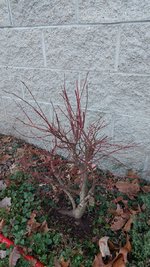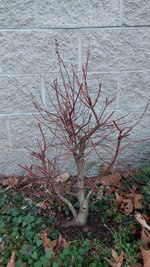Japonicus
Imperial Masterpiece
Katsura planted 4/2018
I just want to root prune and replant where it is, then grow box in 2 years.

This was before I did a little pruning today.

I removed the central part of the tri-fork on the right today.


I will remove this bottom left trunk eventually, but I am leaving its foliage during recoup from root pruning next month.
The 2 major left right roots are not good? Should I be trying to shorten those side roots when I lift it?
I just want to root prune and replant where it is, then grow box in 2 years.

This was before I did a little pruning today.

I removed the central part of the tri-fork on the right today.


I will remove this bottom left trunk eventually, but I am leaving its foliage during recoup from root pruning next month.
The 2 major left right roots are not good? Should I be trying to shorten those side roots when I lift it?









